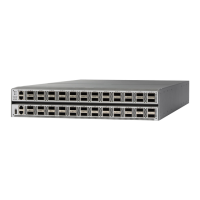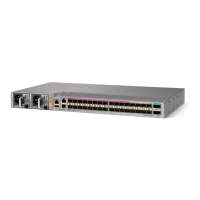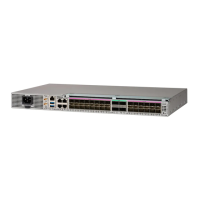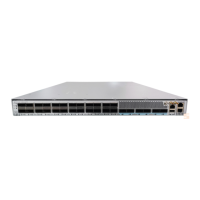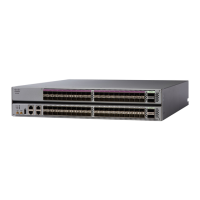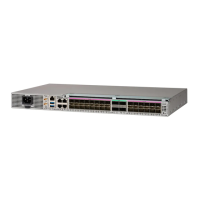Key Rollover
To support the changing of an MD5 key in an operational network without disrupting OSPF adjacencies (and
hence the topology), a key rollover mechanism is supported. As a network administrator configures the new
key into the multiple networking devices that communicate, some time exists when different devices are using
both a new key and an old key. If an interface is configured with a new key, the software sends two copies
of the same packet, each authenticated by the old key and new key. The software tracks which devices start
using the new key, and the software stops sending duplicate packets after it detects that all of its neighbors
are using the new key. The software then discards the old key. The network administrator must then remove
the old key from each the configuration file of each router.
OSPF FIB Download Notification
OSPF FIB Download Notification feature minimizes the ingress traffic drop for a prolonged period of time
after the line card reloads.
Open Shortest Path First (OSPF) registers with Routing Information Base (RIB) through ITAL which keeps
the interface down until all the routes are downloaded to Forwarding Information Base (FIB). OSPF gets the
Interface Up notification when all the routes on the reloaded line card are downloaded through RIB/FIB.
RIB provides notification to registered clients when a:
• Node is lost.
• Node is created.
• Node's FIB upload is completed.
Designated Router (DR) for OSPF
On broadcast or NBMA segments only, OSPF minimizes the amount of information being exchanged on a
segment by choosing one router to be a DR and one router to be a BDR. Thus, the routers on the segment
have a central point of contact for information exchange. Instead of each router exchanging routing updates
with every other router on the segment, each router exchanges information with the DR and BDR. The DR
and BDR relay the information to the other routers.
The software looks at the priority of the routers on the segment to determine which routers are the DR and
BDR. The router with the highest priority is elected the DR. If there is a tie, then the router with the higher
router ID takes precedence. After the DR is elected, the BDR is elected the same way. A router with a router
priority set to zero is ineligible to become the DR or BDR.
Default Route for OSPF
Type 5 (ASE) LSAs are generated and flooded to all areas except stub areas. For the routers in a stub area to
be able to route packets to destinations outside the stub area, a default route is injected by the ABR attached
to the stub area.
The cost of the default route is 1 (default) or is determined by the value specified in the default-cost command.
Link-State Advertisement Types for OSPF Version 2
Each of the following LSA types has a different purpose:
Routing Configuration Guide for Cisco NCS 5500 Series Routers, IOS XR Release 6.3.x
107
Implementing OSPF
Key Rollover
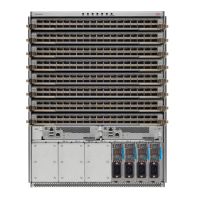
